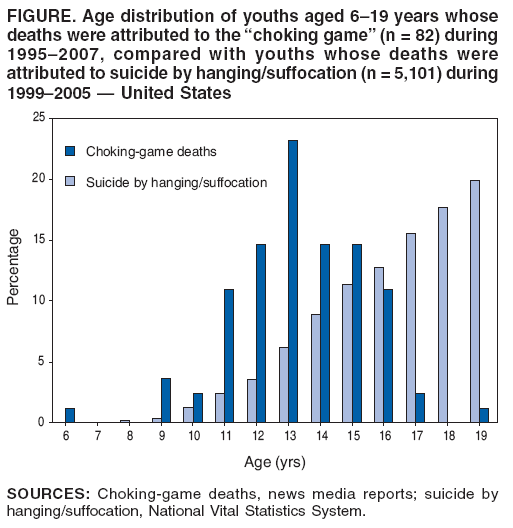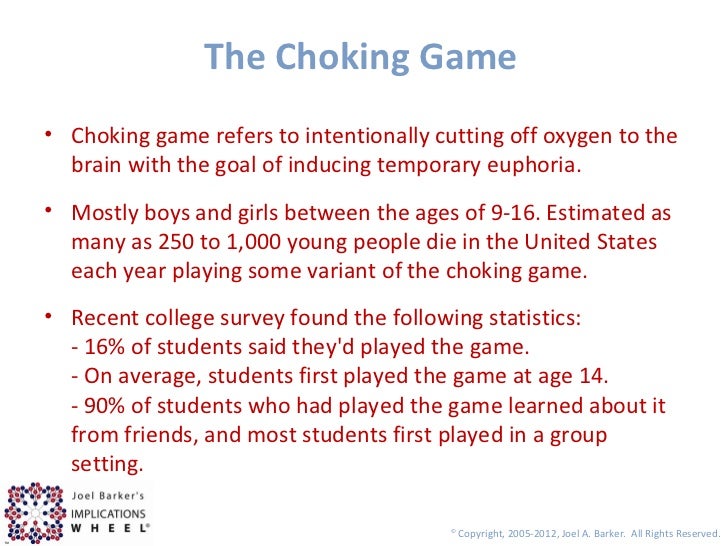The Choking Game Statistics
Mostly boys and girls between 9-16 years old, nationwide and around the world. These adolescents are generally high-achieving in academics, activities and sports, and don’t want to risk getting caught with drugs or alcohol. The practice is taught through word of mouth and through the internet.By one name or another, the Choking Game has been going on for well over 20 years. But the most recent use of bonds (ropes, belts) and the growing practice of playing alone have increased its deadliness dramatically.It’s estimated as many as 250 to 1,000 young people die in the United States each year playing some variant of the Choking Game, but it’s difficult to track statistics because many of the cases are reported as suicides.

The plan is to release pressure at just the right time before passing out. If they pass out first, the weight of their body pulls on the ropes and they can die. There’s also the chance of seizures, stroke, or injuries from a fall.Playing the game in any form causes the permanent death of a large number of brain cells. Within 3 minutes without oxygen to the brain, a person will suffer noticeable brain damage.
Choking Statistics Cdc

The Choking Game Statistics

Between 4 and 5 minutes, a person will die. Some of those kids who died were alone for as little as 15 minutes before someone found them, and it was already too late.Also, the rush they’re getting can be addictive. Many times the Choking Game starts off as a social activity, but adolescents end up doing it alone, which is even more dangerous—nobody’s around to help them if they pass out. Be proactive and warn them about this activity—they often don't know it can kill them or leave them brain damaged. Supervise him or her very closely, and check that siblings are not involved. Dispose of items that could be used for this purpose. Alert school officials so they can monitor the situation; often other students may also be participating.
Consider alerting the adolescent’s friends’ parents as well. If you feel strongly that your child may be doing this, seek professional counseling and support for your child and your family.